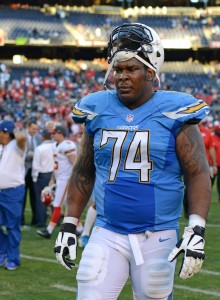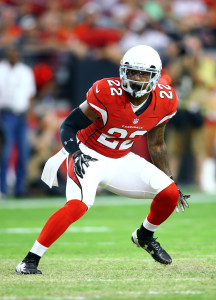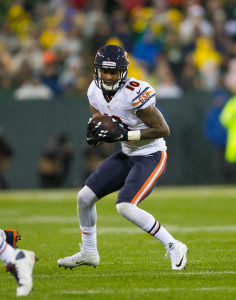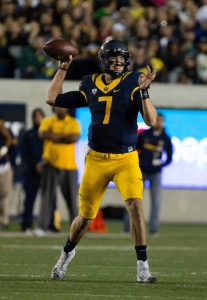In advance of March 9, the start of free agency in the NFL, Pro Football Rumors will detail each team’s three most glaring roster issues. We’ll continue this year’s series with the Los Angeles Chargers, who posted a 5-11 record in 2016 and have since hired a new head coach and relocated north up the I-5.
Depth Chart (via Roster Resource)
Pending Free Agents:
- Jahleel Addae, S
- Isaiah Burse, WR (ERFA)
- Jeremy Butler, WR (RFA)
- Kellen Clemens, QB
- Asante Cleveland, TE (ERFA)
- Jeff Cumberland, TE
- Geremy Davis, WR (ERFA)
- Javontee Herndon, WR (ERFA)
- Ronnie Hillman, RB
- Melvin Ingram, LB
- Dontrelle Inman, WR (RFA)
- Sean Lissemore, DT
- Robert McClain, CB
- Dexter McCluster, RB
- Sean McGrath, TE (ERFA)
- Branden Oliver, RB (RFA)
- Tenny Palepoi, DE (RFA)
- Adrian Phillips, S (ERFA)
- Damion Square, DL
- Manti Te’o, LB
- Korey Toomer, WR (RFA)
- Kenny Wiggins, G (RFA)
- Andre Williams, RB (ERFA)
- Tourek Williams, LB
- Mike Windt, LS
- Danny Woodhead, RB
Top 10 Cap Hits for 2017:
- Philip Rivers, QB: $20,000,000
- Brandon Flowers, CB: $11,000,000
- Corey Liuget, DL: $9,500,000
- D.J. Fluker, G: $8,821,000
- Keenan Allen, WR: $8,650,000
- King Dunlap, T: $8,125,000
- Orlando Franklin, G: $7,600,000
- Travis Benjamin, WR: $6,500,000
- Joey Bosa, DE: $5,880,380
- Joe Barksdale, T: $5,546,875
Other:
- Projected cap space (via Over the Cap): $20,231,314
- Seventh pick in draft
- Must exercise or decline 2018 fifth-year option for CB Jason Verrett
Three Needs:
1) Fix the offensive line: Los Angeles’ front five has been a problem for some time, but given the contract structures of the club’s offensive linemen, the Chargers were essentially locked into most of their starting group, including tackles King Dunlap and Joe Barksdale and guards Orlando Franklin and D.J. Fluker. Now that another season has passed, the effects of cutting ties with several of those players (specifically, the dead money charges that would accelerate onto Los Angeles’ salary cap) have become minimized, meaning the Chargers could rework the line this offseason.
Barksdale, 29, probably isn’t going anywhere, as he just signed an extension with the Bolts in the spring of 2016. As such, it would cost the Chargers more to release Barksdale than it would to retain him. Franklin, too, will likely be kept for at least one more campaign, as Los Angeles would incur nearly $5MM in dead money by cutting ties. Though he struggled last season, Franklin was a significant free agent signing just two years ago, and the Chargers will likely give him one more year to turn things around.
Changes could take place at other spots along the line, however, including left tackle, where Dunlap is currently atop the depth chart. Dunlap, who agreed to a $1.2MM paycut last offseason, has missed 13 games over the past two years, and hasn’t been especially effective when on the field. Los Angeles would clear out $6.5MM in cap space by designating Dunlap a post-June 1 cut, and that looks like the best course of action at present.
Of course, releasing Dunlap would leave a hole on Philip Rivers‘ blindside, but the Chargers could use some of their newfound cap room to pursue a free agent left tackle. The market for offensive tackles isn’t exactly abundant, and the only two starting options that are readily available are the Bengals’ Andrew Whitworth and the Lions’ Riley Reiff. Other players could soon become free agents, as Russell Okung and Kelvin Beachum are tied to options that are likely to be declined, while Ryan Clady could simply be released even after reworking his contract with the Jets.
More likely, the Bolts would need to target their next left tackle through the draft, and while this year’s class of tackles isn’t strong, Los Angeles should have a few choices when the seventh pick comes up. In his initial mock draft, Mel Kiper Jr. of ESPN.com sent Alabama OT Cam Robinson to the Chargers, and while Robinson has generally been viewed as this year’s No. 1 blindside protector, there’s been a recent wave of support for Wisconsin’s Ryan Ramczyk, whom Daniel Jeremiah of NFL.com ranks as his 14th overall player. In a typical draft, neither Robinson nor Ramczyk might be worth a top-10 selection, but it would behoove Los Angeles to draft for need this year.
Guard could also be addressed in the coming months, and although Franklin will be probably be retained, the same can’t be said about D.J. Fluker, who has spent the past two seasons on the interior after playing right tackle during his first two NFL campaigns. Because he is a former first-round pick, Fluker is scheduled to earn $8.821MM under the terms of his fifth-year option, a total that would give him the league’s fifth-highest cap hit among guards. That figure isn’t fully guaranteed until the start of the new league year in March, meaning the Chargers can release Fluker without any fiscal consequences.
Los Angeles should do just that, both due to Fluker’s uninspiring play and the fact that the Chargers have a ready-made solution on the interior. Veteran Matt Slauson is entering the second season of a two-year, $3MM deal (quietly one of the better bargains in the NFL), and although he spent the 2016 campaign at center, he could shift back to his native guard position for 2017. Such a transition would allow 2016 third-round pick Max Tuerk — who used his rookie season as something of a redshirt year (zero snaps) — to take over at center.
Depth has become an issue for the Chargers’ offensive line in recent years, so the club should take a hard look at the veteran market — as well as invest a pick or two — on assets that could step up in the event of injuries up front. If the Panthers’ Mike Remmers can’t find a starting job in free agency, he’d make for a fine swing tackle in southern California. Same goes for Stefen Wisniewski, Tim Lelito, and Brian Schwenke along the interior, all of whom could be paid a slight premium in exchange for accepting backup roles with Los Angeles.
2) Find a dynamic safety: The Chargers’ secondary was a bright spot during a disappointing 2016 campaign, as the club ranked ninth in DVOA against the pass and allowed an 83.8 rating to opposing quarterbacks, good for sixth in the league. Cornerbacks Brandon Flowers and Jason Verrett both missed most of the season due to injury, but Casey Hayward proved to be one of the best free agent signings of 2016 as he morphed into a shutdown corner.
The back end of the defense, however, could afford to be reworked under new coordinator Gus Bradley, and that process should start with the re-signing of Jahleel Addae. Although he missed eight games with a broken collarbone and managed to play only 510 defensive snaps, the 27-year-old Addae graded as the league’s 12th-best safety, according to Pro Football Focus, which gave Addae strong marks against both the run and pass. Addae, whose positive attributes were highlighted last year in an excellent piece by SB Nation’s Jamie Sewell, is a pending free agent, but shouldn’t come at a high cost given his recent injury history and limited track record.
Los Angeles still needs another playmaker next to Addae (who typically plays close to the line of scrimmage), and veteran Dwight Lowery, signed last offseason to replace franchise legend Eric Weddle, isn’t the answer. Lowery is actually signed to a reasonable enough contract — with cap hits of $2.5MM and $3MM in 2017 and 2018, respectively — that he could be retained as depth. More likely, however, the Chargers will part ways with him, creating $2MM if they make Lowery a post-June 1 cut.
If the Bolts don’t opt for an offensive lineman with the seventh overall selection, the club should use the pick on a safety to pair with Addae, and they should get a shot at one of the top defensive backs in this year’s class. Ohio State’s Malik Hooker is viewed as a more rangy safety than LSU’s Jamal Adams, who is thought to be more of an enforcer type, but both should be in consideration for the Chargers. Of course, given that Hooker and Adams are looked at as top-five players in the 2017 class, both could be selected before LA gets its chance. In that event, the Chargers could go with Budda Baker (Washington), whom Dane Brugler of CBSSports.com compares to the Cardinals’ Tyrann Mathieu, in the early second round.
During the free agent period, the Chargers are unlikely to be involved in the Eric Berry market, but Tony Jefferson would seem to be an ideal fit next to Addae. Jefferson, 25, surprisingly wasn’t signed to an offer sheet by a rival club in 2016 despite playing extremely well the year prior, and instead returned to Arizona on a cheap RFA tender. He improved even further, ranking as PFF’s No. 5 safety last season, but it’s possible the rest of the league views Jefferson as a product of the Cardinals’ defense. Still, he’d be a worthwhile risk for Los Angeles.
Other free agent targets for the Chargers could include Barry Church (Cowboys) or Micah Hyde (Packers), but another interesting crop of safeties could soon hit the market after being released by their current clubs. Marcus Gilchrist, notably, could soon be cut loose by the Jets, and a reunion between he and the Chargers would make a lot of sense. The Cardinals’ Tyvon Branch and the Saints’ Jairus Byrd could also come aboard if they’re released in the coming months. Finally, Bears restricted free agent Demontre Hurst might be viewed as a valuable depth option given that Chargers assistant defensive backs coach Chris Harris previously worked with Hurst in Chicago.
3) Add depth at the skill positions: Los Angeles’ 2016 offense was, in a word, average: the club finished 19th in offensive DVOA, 14th in yards, and ninth in scoring. Quarterback Philip Rivers posted a quarterback rating of 87.9, a tick below his career average of 94.7, but the Chargers did boast four breakout offensive assets in running back Melvin Gordon, wide receivers Tyrell Williams and Dontrelle Inman, and tight end Hunter Henry.
The Chargers’ offensive outlook should be positive going forward — especially if their offensive line is corrected — but questions remain about No. 1 wideout Keenan Allen, who suffered a season-ending injury for the second consecutive season, going down in Week 1 with a torn ACL. Allen was taken out by a lacerated kidney in 2015, so it’s probably not fair to call him injury-prone given the nature of that freak injury. However, it’s fair to wonder if Los Angeles, new head coach Anthony Lynn, and holdover offensive coordinator Ken Whisenhunt have questions about Allen’s long-term availability.
Given that, LA could stand to add another pass-catcher this offseason, whether it be through free agency or the draft. Most players who’ve hit the open market are, obviously, veterans in their late-twenties, but Marquess Wilson (24) and Justin Hunter (25) will hit free agency with youth still on their side. Neither has offered much production during their short respective careers — Hunter’s 498 receiving yards in 2014 represents the career-high between the pair — but perhaps receivers coach Nick Sirianni could mold them into a useful parts. The Chargers ranked 29th in special teams DVOA last season, so a potent returner such as Oklahoma’s Dede Westbrook would be a valuable addition early on Day 2 of the draft.
Running back, meanwhile, clearly doesn’t need to be addressed with an early pick after Gordon rebounded from a poor rookie season to post 10 touchdowns in 2016, but the Chargers may target a backup — especially one capable of playing in the passing game — in order to give Gordon the occasional breather. Gordon handled 254 carries last year (10th in the league), and famously rushed the ball nearly 350 times during his senior year at Wisconsin, so he can certainly take a beating. But adding a veteran back such as Travaris Cadet, Jacquizz Rodgers, or Andre Ellington might help the offense as a whole. Re-signing Danny Woodhead, who is coming off his second major leg injury in three seasons, is also a possibility, while a late-round draft pick — such as Boise State’s Jeremy McNichols or UL-Lafayette’s Elijah McGuire — could be in the cards.
Finally, given that Rivers isn’t getting any younger, the Chargers might look to select a developmental quarterback in this year’s draft. Now 35, Rivers is signed through the 2019 campaign and likely isn’t going anywhere soon, but San Diego would do well to plan ahead at the QB position rather than waiting until it becomes a necessity. Davis Webb (Cal), Joshua Dobbs (Tennessee), Seth Russell (Baylor), and Sefo Liufau (Colorado) are among the signal-callers that could be on the board when Los Angeles turns it its card on Day 3.
One of them should be to move back to SD
SD don’t want them,
Yes they do but we don’t
no they don’t. If they did…they’d still be there.
Yes they do, but only if the dont. They don’t, but they do, but only if they don’t and won’t.
Word
No one want them
To be honest, if they win before the Rams they will be the more popular team in LA because realistically the Rams weren’t wanted here either lol…LA belongs to the Raiders
Their main need is a new owner! Too obvious?
If one of the two safeties are there at 7, that’s the pick.
I’d like to see the o-line reinforced by pros, and a few later draftees that may build into pros.
WR is pretty set with Allen, Williams, Inman and Travis Benjamin, but a power RB would be a nice addition to get a chance of pace for finesse runner Gordon.
Re-signing Ingram is imperative, Addai may not be a good fit for Gus Bradley’s system.